Whether you’re an aspiring musician or a seasoned guitar enthusiast, finding the perfect wood for your guitar is essential in achieving the desired tone and resonance. With so many options available, it can be overwhelming to make the right choice. However, fear not! In this article, we will guide you through the process of choosing the best wood for your guitar, providing you with invaluable insights and expert advice. So, grab your pick and get ready to explore the world of guitar woods!
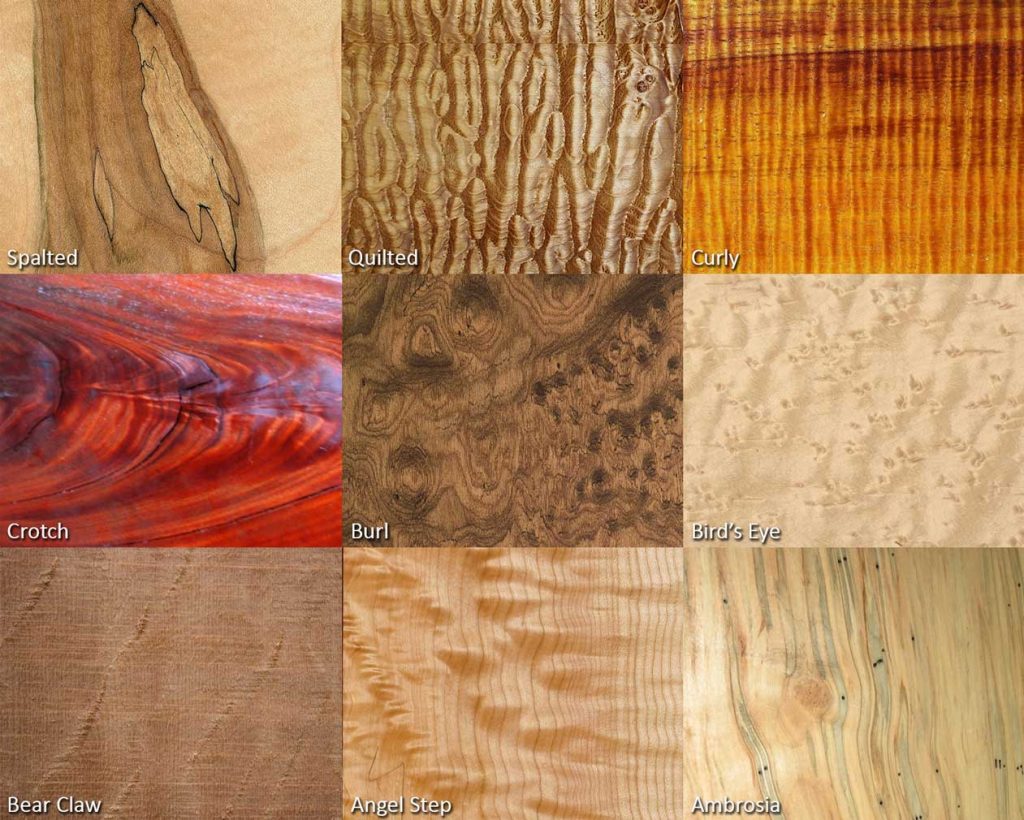
Importance of Wood Selection
When it comes to building a guitar, the type of wood used plays a pivotal role in determining the overall sound, durability, and aesthetic appeal of the instrument. The wood selection process can be overwhelming, but understanding the characteristics of different woods can help you make an informed decision. This article will guide you through the importance of wood selection for acoustic and electric guitars, as well as the different types of woods commonly used for necks, fretboards, tops, and back/sides. By the end, you’ll have a clear understanding of how different woods can affect your guitar’s timbre, tone, and overall performance.
Timbre and Tone
The choice of wood significantly impacts the timbre and tone of a guitar. The vibrations of the strings are transferred to the wood, which resonates and amplifies the sound. Different woods have distinct densities and grain patterns, resulting in varied tonal characteristics. For acoustic guitars, spruce and cedar are two popular choices. Spruce is known for its balanced and versatile tone, making it suitable for a wide range of playing styles. On the other hand, cedar offers a warmer and more focused sound, perfect for fingerstyle or light strumming. Mahogany, often used in acoustic and electric guitars, produces a rich, warm tone with enhanced midrange frequencies. Rosewood, with its pronounced lows and sparkling highs, adds complexity and depth to the overall sound.
Durability and Stability
Wood selection also affects the durability and stability of a guitar. Different woods have varying resistance to changes in temperature, humidity, and overall wear and tear. For acoustic guitars, mahogany is often chosen for its strength and ability to withstand climate fluctuations. Rosewood, maple, and walnut are also highly regarded for their durability. In the realm of electric guitars, alder, maple, and ash are popular choices known for their resilience and stability. These woods can withstand the relentless energy of amplified playing without compromising the integrity of the instrument.
Aesthetics
While the tonal and structural aspects of wood selection are crucial, aesthetics should not be overlooked. The look and feel of a guitar can greatly impact a player’s personal connection with the instrument. Different woods exhibit unique grain patterns, colors, and visual textures, allowing you to customize the aesthetics of your guitar. For acoustic guitars, spruce and cedar tops are visually appealing, with their contrasting light and dark patterns. Mahogany and rosewood backs and sides add a touch of sophistication and elegance, while maple offers a striking, figured grain. In electric guitars, the natural grain of woods like alder, maple, and ash can be further enhanced through different finishes, making each instrument a work of art.
Acoustic Guitars
Spruce
Spruce is one of the most popular choices for acoustic guitar tops due to its excellent tonal properties. It is highly regarded for its balanced tonal range and responsiveness, allowing for versatility in playing styles. Spruce offers a tight, focused sound with clear articulation and a wide dynamic range. The most commonly used spruce varieties include Sitka spruce, Engelmann spruce, and Adirondack spruce. Sitka spruce is known for its strength and flexibility, making it a popular choice for a wide range of playing styles and genres. Engelmann spruce, with its warmer and more sensitive sound, is often preferred by fingerstyle players. Adirondack spruce, known for its robust and powerful tone, is often found in vintage-inspired guitars or instruments meant for heavier playing styles.
Cedar
Cedar is another popular choice for acoustic guitar tops, favored for its warm and rich tonal characteristics. It produces a strong, focused sound with a pronounced midrange and an overall mellow tonal quality. Cedar tops are particularly well-suited for fingerstyle and light strumming, as they offer excellent responsiveness and sensitivity. While cedar may lack the volume and projection of spruce, its warm and intimate sound is highly sought after by many players.
Mahogany
Mahogany is a versatile wood that can be used for both acoustic guitar tops and back/sides. It is known for its warm and balanced tone with strong midrange frequencies. Mahogany tops provide a focused and punchy sound, ideal for players who prefer a more direct and controlled playing experience. When used for back and sides, mahogany adds depth and warmth to the overall sound, while still maintaining clarity and definition.
Rosewood
Rosewood is a popular choice for acoustic guitar back and sides, renowned for its rich and complex tonal characteristics. It offers a wide frequency response with pronounced lows and sparkling highs, resulting in a guitar that is both articulate and full-bodied. Rosewood imparts a certain sweetness and depth to the sound, making it a favorite among fingerstyle players and those who appreciate a lush, well-balanced tone.
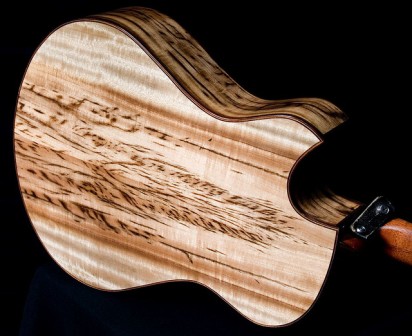
Electric Guitars
Alder
Alder is one of the most prevalent woods used for electric guitar bodies. It is lightweight and resonant, offering a balanced tonal response with a clear, focused sound. Alder produces a strong midrange emphasis, allowing for excellent note definition and articulation. It is often favored for its versatility, as it can suit various musical genres and playing styles. Alder’s natural grain patterns add to its visual appeal, making it a popular choice for a wide range of electric guitar models.
Maple
Maple is another widely utilized wood for electric guitar bodies. It is known for its bright and snappy tone, with enhanced sustain and clarity. Maple offers a well-balanced tonal response, emphasizing the upper midrange frequencies and providing excellent note definition. Its dense and hard nature contributes to a long sustain, making it a preferred choice for lead guitarists and those seeking a more cutting, precise sound. Maple also showcases beautiful, eye-catching grain patterns, often accentuated by transparent or natural finishes.
Ash
Ash is often chosen for electric guitar bodies due to its distinctive tonal characteristics. It produces a bright, punchy sound with strong sustain and clarity. Ash provides a pronounced midrange response, offering excellent note definition and presence. It is particularly well-suited for players who desire a more aggressive and articulate tone. Like alder and maple, ash also features appealing grain patterns that can be enhanced through different finishes and stains.
Mahogany
Mahogany is not only an excellent choice for acoustic guitars, but it also has a place in the world of electric guitars. It is known for its warm and rich tone, with enhanced midrange frequencies and a pronounced low-end response. Mahogany electric guitar bodies offer a thick and resonant sound, adding depth and sustain to the overall tonal character. It is often favored among blues and rock guitarists who seek a fat and smooth sound, with excellent sustain and harmonic content.
Neck Woods
Mahogany
Mahogany is a popular choice for guitar necks due to its stability, strength, and tonal characteristics. It offers a warm and rich tone with enhanced midrange frequencies. Mahogany necks provide excellent sustain and resonance, allowing for a smooth and well-rounded sound. It is also relatively lightweight, making it comfortable to play for extended periods. Mahogany necks can be found on a wide range of guitar models and are well-regarded for their reliability and durability.
Maple
Maple is another commonly used wood for guitar necks, known for its bright and snappy sound. It offers excellent note definition and clarity, making it ideal for styles that require fast and articulate playing. Maple necks provide a tight and focused sound, allowing individual notes to stand out with precision. They are often associated with a more traditional, vintage feel and are favored by many guitarists, particularly in the realm of electric guitars.
Rosewood
Rosewood necks are less common than mahogany or maple, but they offer a unique tonal quality and aesthetic appeal. They produce a warm and mellow sound, with a slightly scooped midrange and enhanced sustain. Rosewood necks offer a smooth playing experience, with a comfortable feel and a touch of elegance. They are often found on high-end or custom guitars, where players seek a unique and customized instrument.
Ebony
Ebony necks are highly regarded for their durability, stability, and sleek appearance. They provide excellent sustain and clarity, with a bright and focused tone. Ebony necks offer a fast and smooth playing experience, with a slightly brighter tonal character compared to other woods. Their smooth texture and dark color add a touch of sophistication to the overall look of the instrument. Ebony necks are frequently found on premium, high-end guitars that prioritize quality and performance.
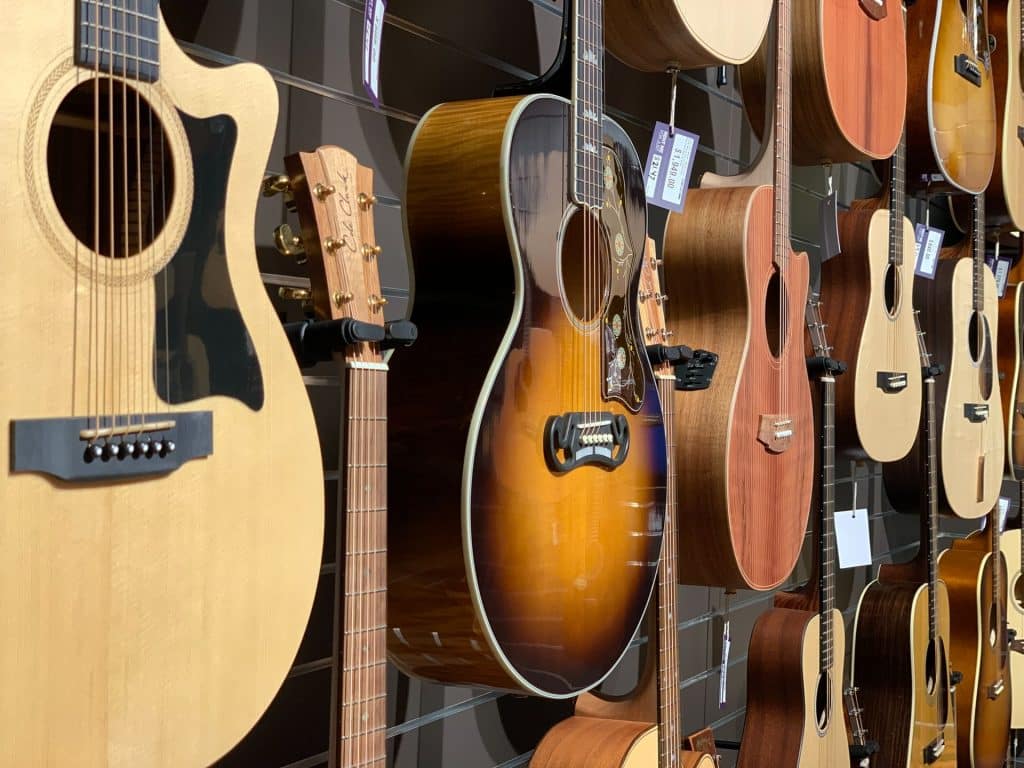
Fretboard Woods
Rosewood
Rosewood is the most commonly used wood for guitar fretboards. It offers a warm and balanced tonal response, with a lush, mellow sound. Rosewood fretboards provide excellent sustain and resonance, allowing notes to ring out beautifully. They are known for their smooth playing surface and comfortable feel under your fingers. Rosewood fretboards are versatile, able to complement a wide range of playing styles and musical genres.
Ebony
Ebony is another popular choice for guitar fretboards due to its durability, stability, and distinctive tonal characteristics. It offers a bright and snappy sound with excellent note definition and clarity. Ebony fretboards provide a smooth playing experience, allowing for fast and precise fingering. They are often favored by lead guitarists and those who desire a crisp, articulate sound with enhanced top-end frequencies.
Maple
Maple fretboards are less common compared to rosewood and ebony, but they offer a unique tonal quality and aesthetic appeal. They produce a bright and snappy sound with great note separation. Maple fretboards provide excellent clarity and definition, allowing each note to ring out with precision. They offer a smooth playing surface and a distinctive, bright appearance. Maple fretboards are often found on guitars aimed at specific musical styles, where players seek a more cutting and precise sound.
Top Woods
Sitka Spruce
Sitka spruce is one of the most popular choices for acoustic guitar tops. It is known for its strength, versatility, and tonal excellence. Sitka spruce tops offer a balanced and responsive sound, with great projection and volume. They provide a well-rounded tonal character, making them suitable for various playing styles and genres. Sitka spruce tops are often favored by players who require a guitar with dynamic range and clarity.
Cedar
Cedar tops are highly regarded for their warm and mellow sound. They produce a strong and focused sound with a pronounced midrange and enhanced sustain. Cedar tops are particularly well-suited for fingerstyle playing, as they offer excellent responsiveness and sensitivity. While cedar may have a slightly lower volume compared to spruce, its intimate and rich tonal characteristics make it a highly sought-after wood choice.
Engelmann Spruce
Engelmann spruce is a tonewood prized for its warmth and sensitivity. It offers a lush and resonant sound with a balanced tonal range. Engelmann spruce tops provide a sweet and delicate tonal character, which makes them particularly appealing to fingerstyle players and those who seek a more nuanced sound. While Engelmann spruce may have slightly less projection compared to other spruce varieties, its tonal complexity and responsiveness more than compensate for it.
Adirondack Spruce
Adirondack spruce, also known as red spruce, has a reputation for its powerful and dynamic sound. It offers a robust and resonant tone with exceptional volume and projection. Adirondack spruce tops provide a rich and complex tonal character, with a strong midrange presence and a bold, punchy sound. They are often found in vintage-inspired or high-end guitars, where players desire a forceful and expressive instrument.
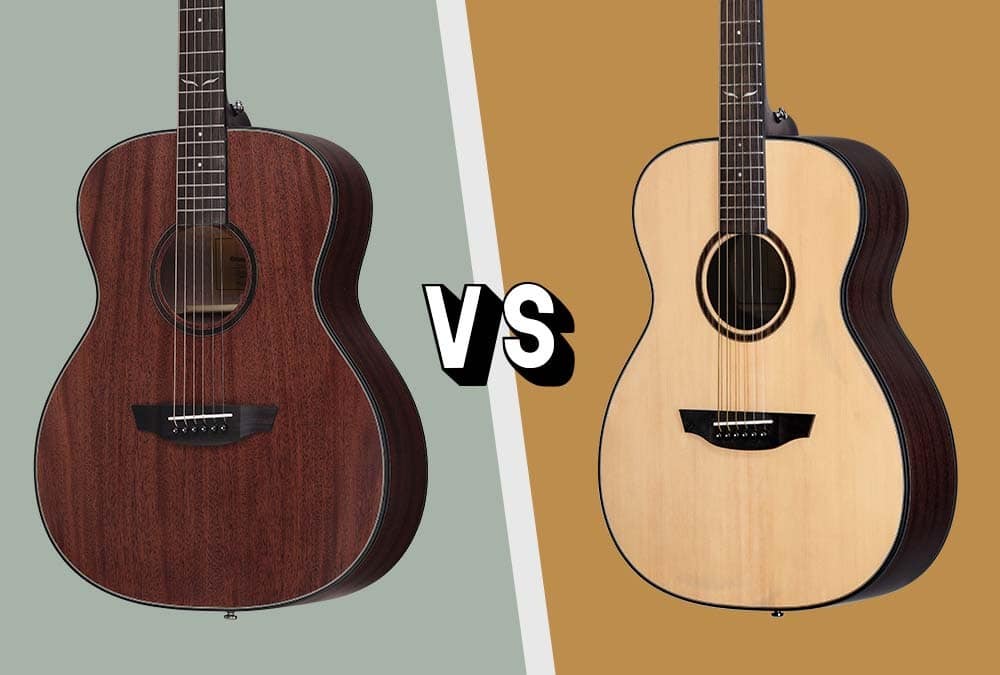
Back and Side Woods
Mahogany
Mahogany is frequently used for the back and sides of acoustic guitars due to its warm and balanced tonal characteristics. It adds depth and richness to the overall sound, enhancing the midrange frequencies and offering a punchy and focused tone. Mahogany back and sides provide excellent projection and clarity, making them suitable for a wide range of musical genres and playing styles. Additionally, mahogany is known for its durability and resistance to temperature and humidity fluctuations, ensuring the long-term stability of the instrument.
Rosewood
Rosewood is a popular choice for the back and sides of acoustic guitars, prized for its complex tonal qualities and stunning visual appeal. It offers a wide frequency response, with pronounced lows, sparkling highs, and a well-defined midrange. Rosewood back and sides add depth and complexity to the overall sound, creating a guitar with a lush, rich tonal character. It is particularly renowned for its ability to enhance sustain and resonance, ensuring a captivating playing experience.
Maple
Maple back and sides are less common in acoustic guitars, but they offer a distinct tonal quality and look. Maple produces a bright and focused sound with enhanced sustain and clarity. It adds definition and articulation to the overall sound, with a tight and precise tonal character. Maple back and sides contribute to a guitar’s projection and note separation, making it a suitable choice for players who prioritize a more cutting and precise sound.
Walnut
Walnut is a versatile wood often used for the back and sides of acoustic guitars. It produces a well-balanced tonal response, with a warm and rich sound. Walnut back and sides add depth and complexity to the overall sound, providing a wide frequency response with pronounced lows and clear highs. Walnut is appreciated for its versatility, as it can adapt to different playing styles and genres. Additionally, walnut showcases a beautiful, rich color and grain patterns that enhance the visual appeal of the instrument.
Effects of Different Wood Combinations
Wood selection not only affects individual components of a guitar but also impacts the overall balance and resonance of the instrument. By carefully choosing different woods for the top, back/sides, neck, and fretboard, you can achieve a desired sound and tonal character. Each wood combination offers unique tonal properties, allowing you to shape your guitar’s voice to suit your playing style and musical preferences.
Balancing Tone
Selecting the right combination of woods can help balance the different tonal frequencies of a guitar. For instance, pairing a bright-sounding wood like maple with a warmer wood like mahogany can result in a well-balanced tonal response, with enhanced clarity and depth. Similarly, combining a spruce top with rosewood back and sides can offer a blend of crisp highs, clear mids, and rich lows, resulting in a balanced yet vibrant sound. By considering the tonal characteristics of different woods, you can create a guitar that produces a harmonically rich and wide-ranging tone.
Enhancing Resonance
The combination of woods used in a guitar can also significantly impact its resonance. Certain wood combinations have a natural synergy that enhances the instrument’s overall sustain and resonance. For example, pairing a spruce top with a mahogany back and sides can result in a guitar that exhibits excellent sustain and projection. The combination of spruce’s responsiveness and mahogany’s warmth can create a harmonious balance, allowing the guitar to resonate freely and produce a vibrant and expressive sound. Considering how the different woods interact with each other can help you achieve a guitar with exceptional resonance and tonal complexity.
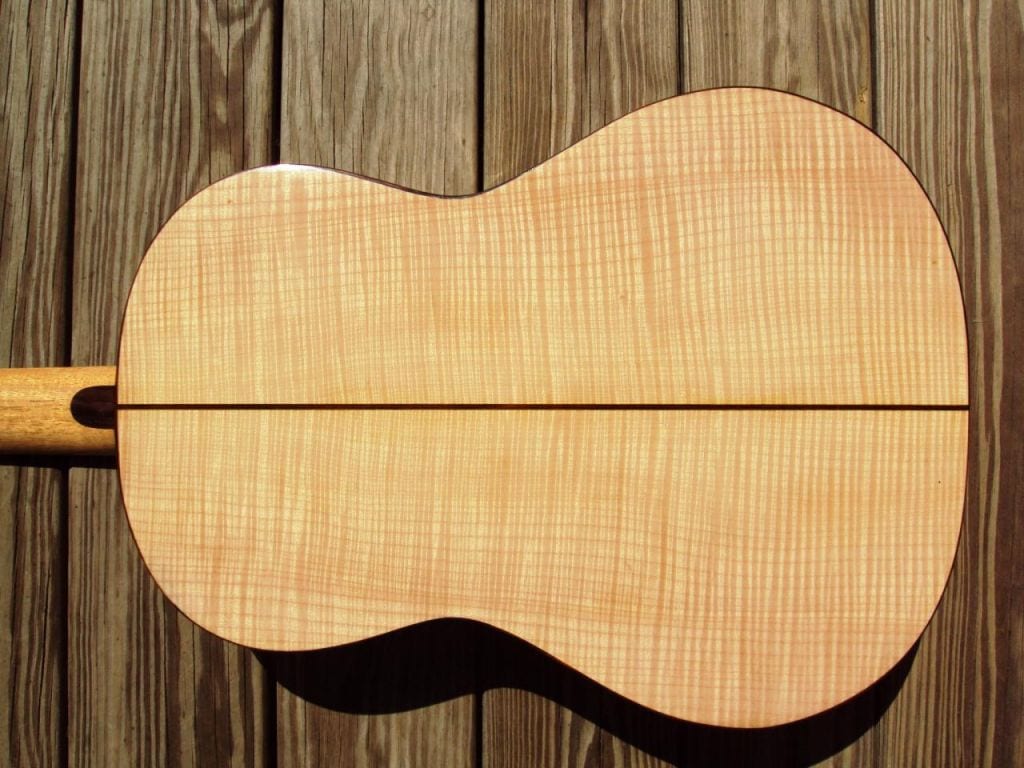
Other Considerations
While wood selection is crucial, there are other important factors to consider when choosing the best wood for your guitar.
Climate and Environmental Factors
The climate and environment in which you live and play can have a significant impact on your guitar’s performance and longevity. Certain woods, such as mahogany, are more resistant to changes in temperature and humidity, making them suitable for varying climates. Additionally, if you live in an area with high humidity or extreme dryness, you may want to consider woods that are less prone to warping or cracking. Proper care and maintenance, such as using a humidifier or dehumidifier, can help mitigate potential issues related to environmental factors.
Personal Preference
Ultimately, personal preference plays a crucial role in choosing the best wood for your guitar. While certain woods are known for their specific tonal characteristics, it’s essential to select a wood that resonates with your playing style, musical genre, and personal taste. Experimenting with different wood combinations and playing different guitars can help you discover the tonal qualities that inspire you. Remember, there is no one-size-fits-all approach when it comes to wood selection, and what sounds amazing to one player may not necessarily appeal to another.
Budget
Your budget is another important factor to consider when selecting the best wood for your guitar. Different woods have varying price points, with exotic or rare woods often carrying a higher cost. While premium woods can offer enhanced tonal qualities and visual appeal, they may not be financially viable for everyone. Fortunately, there are plenty of affordable alternatives that can deliver excellent sound and performance.
Conclusion
The importance of wood selection cannot be overstated when it comes to building a guitar. The type of wood used directly influences the instrument’s timbre, tone, durability, stability, and aesthetic appeal. Whether you’re building a custom guitar or shopping for a pre-made instrument, understanding the characteristics of different woods is crucial in making an informed decision. By considering the tonal properties of various woods and how they interact with each other, you can create or find a guitar that speaks to you and allows you to express your musicality to the fullest. Remember, the best wood for your guitar is the one that resonates with your unique style and brings out the best in your playing.






